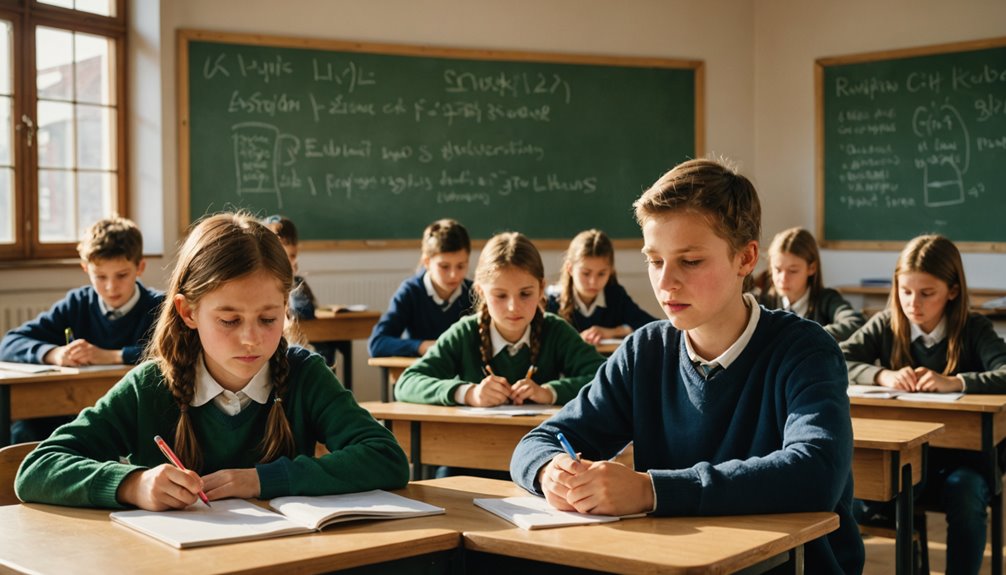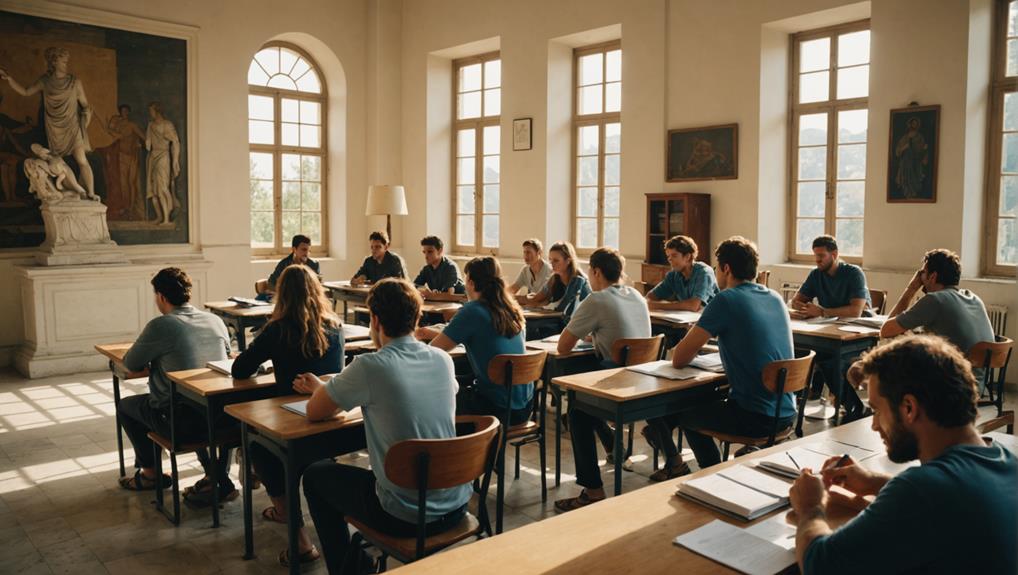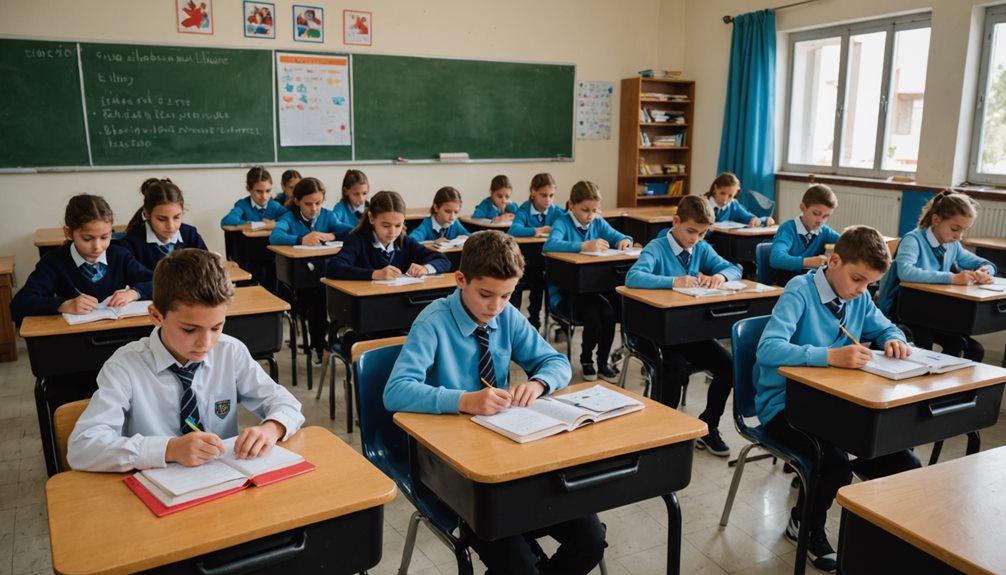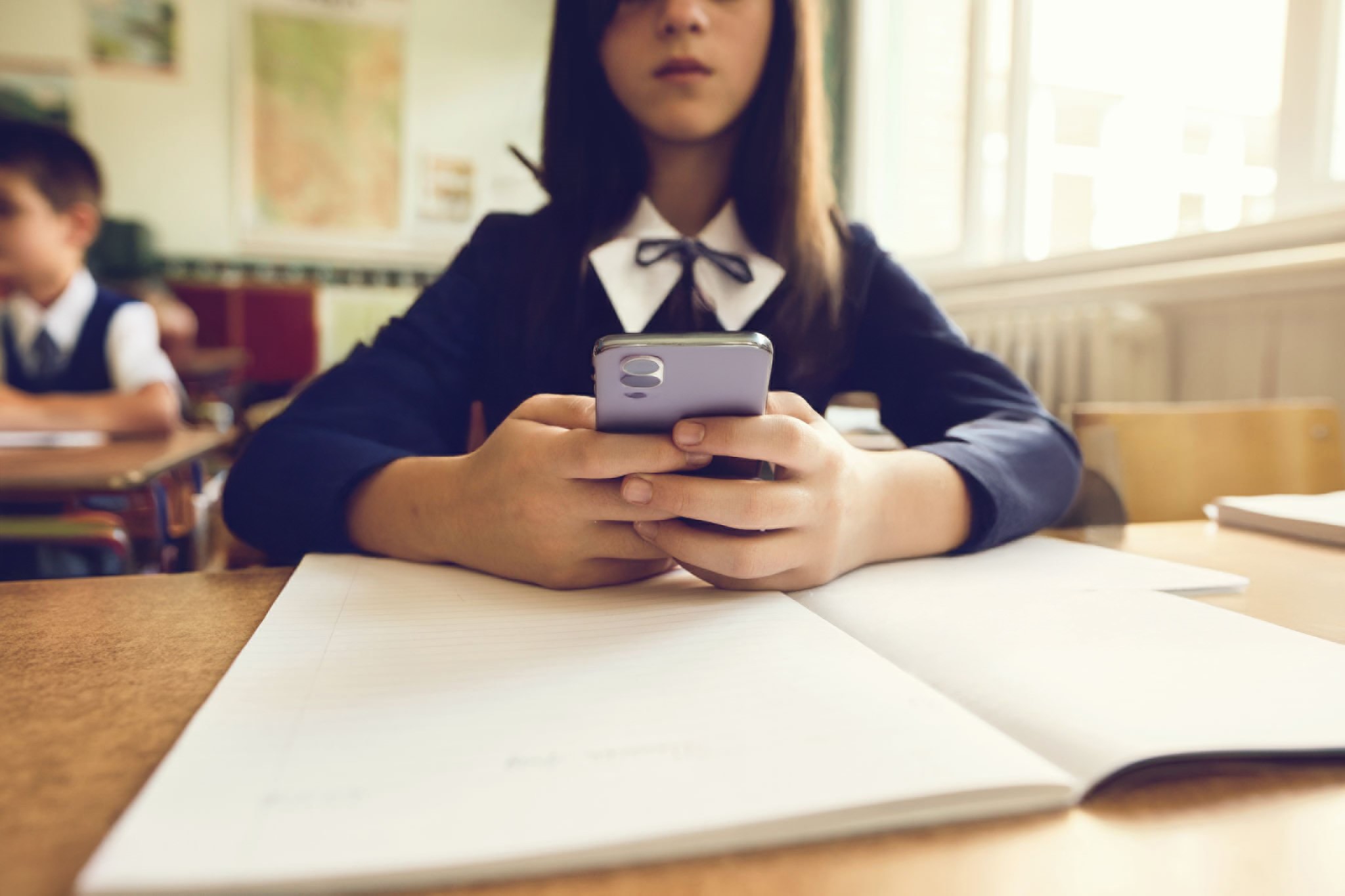L’interdiction des téléphones portables et des appareils intelligents dans les écoles remonte à 2019. En 2024, le DfE (ministère de l’Éducation) a publié des directives à l’intention des écoles sur la manière et les raisons pour lesquelles elles devraient interdire l’utilisation des téléphones portables. Nous examinons ici ces directives, ainsi que les retours d’expérience concrets d’écoles qui ont choisi d’interdire les smartphones en classe.
Pourquoi mettre en place une interdiction ?
Si vous êtes arrivé jusqu'ici, vous connaissez probablement les raisons pour lesquelles interdire les téléphones portables en classe est une mesure positive. De nombreuses études et recherches montrent que le retrait des smartphones contribue à accroître la concentration en classe et à améliorer les interactions sociales en dehors de celle-ci. Il a été démontré que réduire la dépendance améliore les notes, mais réduit également l'anxiété.
C'est une position partagée par les parents, démontrée dans une étude de Parent Kind qui a révélé que 83% de parents ont déclaré qu'ils estimaient que les smartphones étaient potentiellement dangereux pour les jeunes, avec 9 parents sur 10 préoccupés par le potentiel d'intimidation et d'abus en ligne.
Même si tous les parents ne sont pas favorables à une interdiction totale, une éducation positive améliorerait probablement considérablement le soutien. Vous pouvez y parvenir en :
- Impliquer les parents et les élèves dans l’élaboration des politiques
- Fournir un préavis suffisant des changements de politique
- Mise en place d’une période d’essai avant la mise en œuvre complète
- Utiliser diverses méthodes de communication pour informer les parents
- Expliquez aux parents les avantages de la politique sur les téléphones portables
- Collaborer avec les parents d’élèves nécessitant des aménagements raisonnables
- Rassurer les parents sur la manière de contacter l'école en cas d'urgence
Mise à jour de la politique de comportement de votre école
La politique d'une école interdisant l'utilisation des téléphones portables peut être incluse dans la politique de comportement de l'école ou faire l'objet d'un document indépendant. La politique doit être accessible, alignée sur la culture de l'école, cohérente et simple à suivre.
Il existe plusieurs façons de créer un environnement sans téléphone. Voici quelques exemples.
1. Les téléphones portables ne sont pas autorisés dans les locaux de l'école.
Une école peut interdire aux élèves d’apporter des téléphones portables à l’école et exiger qu’ils les laissent à la maison. Cette règle claire est facile à appliquer, car tout téléphone trouvé dans l’enceinte de l’école constitue une infraction.
2. Téléphone portable remis à l'arrivée
Les écoles peuvent autoriser les élèves à utiliser leur téléphone avant et après les cours, mais en restreindre l'accès pendant les heures de cours. À leur arrivée, les élèves remettent leurs appareils au personnel et les récupèrent à la fin de la journée. Les écoles doivent être conscientes que les élèves peuvent posséder plusieurs téléphones, ce qui peut être difficile à gérer.
3. Téléphones portables stockés dans un endroit sûr
De plus en plus d'écoles utilisent des pochettes pour téléphone ou des dispositifs de stockage similaires. Cela signifie que les élèves peuvent garder leur téléphone à portée de main, mais un aimant à l'intérieur de la pochette maintient la pochette verrouillée jusqu'à la fin de la journée scolaire.
4. Jamais utilisé, vu ou entendu
Certaines écoles peuvent autoriser les téléphones s'ils ne sont pas utilisés, vus ou entendus, avec de fortes mesures de dissuasion en cas d'infraction. Une application rigoureuse, cohérente et visible est essentielle. Les écoles doivent communiquer clairement les sanctions aux parents et aux élèves afin de favoriser une culture « sans téléphone ». Les téléphones peuvent être confisqués s'ils ne sont pas éteints dans les sacs. Une application cohérente réduira progressivement l'utilisation du téléphone.
Au minimum, votre politique de comportement actuelle devrait mentionner les smartphones comme un objet interdit afin qu'ils puissent être détectés dans le cadre de la politique de recherche de l'école. Ensuite, révisez vos sanctions. En parlant à un directeur d'école, l'initiative Smartphone Free Childhood a été informée :
« Il faut une sanction très impopulaire et sévère. La confiscation pour une période donnée est très dure, mais il faut que ce soit une sanction sévère, car cette règle est totalement contre-culturelle. »
Développer une culture sans téléphone
En commençant par la base, vous pourriez inclure un briefing sur les smartphones dans le pack de bienvenue de l'année 7 pour les nouveaux parents et tuteurs, en précisant qu'ils n'ont pas besoin d'un smartphone pour commencer l'école secondaire.
Il faut aller plus loin : éliminer les smartphones des éléments essentiels de la vie scolaire, comme les emplois du temps ou les devoirs, sinon vous obligez par inadvertance les élèves à utiliser leur téléphone.
De même, les enseignants doivent montrer l'exemple. Découragez ou empêchez les enseignants d'utiliser leur téléphone sauf si cela est nécessaire pour enseigner et informez également les visiteurs de l'école. Les pochettes Phone Locker se sont avérées efficaces, car le téléphone reste en votre possession et cela ne ressemble pas à une mesure punitive : votre téléphone reste avec vous.
Si vous souhaitez créer une école sans téléphone, nous vous recommandons de présenter tous les avantages aux parents et aux enfants avec un préavis raisonnable. Contactez-nous pour notre pack, qui comprend des modèles de lettres aux parents et des présentations aux étudiants.
Vous pouvez également bénéficier du soutien d’autres écoles de la région qui partagent la même philosophie. Cela favorise également la cohérence entre les enfants qui passent de l’école primaire à l’école secondaire. Vous pouvez également découvrir des expériences positives que d’autres écoles de la région ont déjà vécues en mettant en œuvre l’interdiction des téléphones portables, ce qui est idéal à partager avec vos parties prenantes.
Décision sur les sanctions
Les écoles ont le pouvoir de confisquer les téléphones portables et les appareils intelligents (pour toute durée jugée appropriée), la loi protégeant le personnel de toute responsabilité en cas de perte ou de dommage, à condition qu'il ait agi légalement.
Les directeurs d'école ou le personnel autorisé ont le pouvoir légal de fouiller les élèves ou leurs biens à la recherche de téléphones portables s'il existe des motifs raisonnables de soupçonner une violation de la politique.
Selon le ministère de l'ÉducationLes écoles doivent réfléchir soigneusement à l'objectif qu'elles espèrent atteindre en confisquant un téléphone et aux autres moyens possibles pour y parvenir. Il faut tenir compte de l'individu au moment de décider de la sanction à infliger. Il est important de tenir compte de la situation spécifique et des circonstances propres à l'élève. Cela inclut des éléments tels que son âge, ses croyances religieuses qui pourraient être affectées et ses éventuels besoins d'apprentissage particuliers.
Les écoles, les événements et les lieux du monde entier utilisent les pochettes Phone Locker pour créer des espaces sans téléphone. En savoir plus sur notre produit sur notre site web, ou tendre la main Si vous avez des questions.










